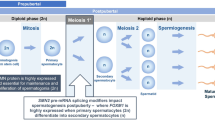Abstract
Objective
To study the histopathological characteristics and mutation spectrum of patients presenting with the Duchenne muscular dystrophy (DMD) phenotype.
Methods
This was a descriptive study conducted over a period of 8 years. Multiplex ligation-dependent probe amplification (MLPA) was done in patients presenting with the DMD phenotype. If MLPA was negative, patients were offered muscle biopsy for histopathological studies and/or next generation sequencing (NGS) based multigene panel testing for muscular dystrophies.
Results
Of the 510 patients included, mutation in the DMD gene was detected by MLPA in 372 (72.9%), of whom 342 (67.1%) had exonic deletions and 30 (5.9%) had exonic duplications. Exons 45–55 were most commonly involved in large deletions and exons 1–10 were the commonest exons involved in duplications. In the MLPA-negative cohort, 27 proceeded for muscle biopsy. NGS was done in 14 patients, 10 of whom had pathogenic mutations in the DMD gene, 3 were non dystrophinopathies and no pathogenic variant could be identified in one patient.
Conclusions
For patients presenting with the DMD phenotype, MLPA of the DMD gene has a high diagnostic rate of about 73%, and non-dystrophinopathies may constitute a small but significant proportion.
Similar content being viewed by others
References
Emery AE. Population frequencies of inherited neuromuscular diseases: A world survey. Neuromuscul Disord. 1991;1:19–29.
Gurvich OL, Maiti B, Weiss RB, Aggarwal G, Howard MT, Flanigan KM. DMD exon 1 truncating point mutations: amelioration of phenotype by alternative translation initiation in exon 6. Hum Mutat. 2009;30:633–40.
Swaminathan B, Shubha GN, Shubha D, Murthy AR, Kiran Kumar HB, Shylashree S, et al. Duchenne muscular dystrophy: a clinical, histopathological and genetic study at a neurology tertiary care center in Southern India. Neurol India. 2009;57:734–8.
Banerjee M, Verma IC. Are there ethnic differences in deletions in the dystrophin gene? Am J Med Genet. 1997;68:152–7.
Basumatary LJ, Das M, Goswami M, Kayal AK. Deletion pattern in the dystrophin gene in Duchenne muscular dystrophy patients in northeast India. J Neurosci Rural Pract. 2013;4:227–9.
Singh V, Sinha S, Mishra S, Chaturvedi LS, Pradhan S, Mittal RD, et al. Proportion and pattern of dystrophin gene deletions in north Indian Duchenne and Becker muscular dystrophy patients. Hum Genet. 1997;99:206–8.
Verma PK, Dalal A, Mittal B, Phadke SR. Utility of MLPA in mutation analysis and carrier detection for Duchenne muscular dystrophy. Indian J Hum Genet. 2012;18:91–4.
Bladen CL, Salgado D, Monges S, Foncuberta ME, Kekou K, Kosma K, et al. The TREAT-NMD DMD Global Database: analysis of more than 7,000 Duchenne muscular dystrophy mutations. Hum Mutat. 2015;36:395–402.
Okubo M, Minami N, Goto K, Goto Y, Noguchi S, Mitsuhashi S, et al. Genetic diagnosis of Duchenne/Becker muscular dystrophy using next-generation sequencing: validation analysis of DMD mutations. J Hum Genet. 2016;61:483–9.
Chakrabarty B, Sharma MC, Gulati S, Kabra M, Pandey RM, Sarkar C. Dystrophinopathy diagnosis made easy: Skin biopsy, an emerging novel tool. J Child Neurol. 2014;29:469–74.
Acknowledgements
MedGenome Labs Private Ltd., Bengaluru, India for performing next generation sequencing-based molecular genetic studies.
Funding
Funding: None; Competing interests: None stated.
Author information
Authors and Affiliations
Corresponding author
Rights and permissions
About this article
Cite this article
Tallapaka, K., Ranganath, P., Ramachandran, A. et al. Molecular and Histopathological Characterization of Patients Presenting with the Duchenne Muscular Dystrophy Phenotype in a Tertiary Care Center in Southern India. Indian Pediatr 56, 556–559 (2019). https://doi.org/10.1007/s13312-019-1553-z
Received:
Revised:
Accepted:
Published:
Issue Date:
DOI: https://doi.org/10.1007/s13312-019-1553-z




